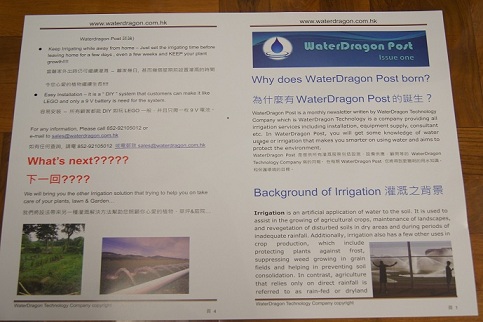Image Galleries
News from Industry
Poor irrigation may cost 18 billion yuan by 2030
By Wang Xinyuan
A new report by a US consultancy showed Wednesday that the country's major grain-growing regions could suffer substantial agricultural losses due to drought brought on by climate change in the coming years.
Known as the "bread basket," the Northeast and the North China together produced as much as 25 percent of China's total grain output of 528.7 million tons in 2008, close to the total grain production of Brazil.
In February this year, severe drought damaged 4.5 million hectares in eight provinces in North China, a region encompassing half of China's total wheat growing area. In May, Heilongjiang suffered its worst drought in nearly 60 years, with 6 million hectares affected.
Even a "moderate" climate change scenario is to result in reduced precipitation in the Northeast and North, leading to a loss of as much as 18 billion yuan ($2.64 billion) by 2030, down from an expected 14 billion yuan ($2.05 billion) in income without the impact of climate change, McKinsey's analysts wrote in the report.
The Northeast is especially vulnerable to drought due to its undeveloped irrigation infrastructure, and will lose 50 percent of its total output by 2030, the report said.
"Without sufficient measures in place, China's long-term food security, and indeed social stability, could be put at serious risk," said Martin Joerss, a partner at McKinsey who leads the firm's climate change initiative in China.
Investment into irrigation measures, together with expanded insurance coverage, could help cut agricultural losses from drought in Northeast and North, the study showed.
China spends around 10 billion yuan ($1.46 billion) annually nationwide on irrigation and technology to mitigate the effects of drought.
In North and Northeast China alone, China will need to spend up to 5 billion yuan ($732.25 million) annually on measures including drip and sprinkle irrigation, soil conservation, seed engineering, reservoirs and water storage. Through such measures, the study shows, China could avert as much as a 50 percent, or 9 billion yuan ($1.32 billion), loss of crops in 2030.
In addition to the irrigation measures, partial losses could be covered by agricultural insurance. Today, only 25 percent of China's farmland is covered by agricultural insurance, compared with 75 percent in the US, Joerss said.
"It's the role of the government to educate the users about the value of agricultural insurance, and provide regulatory incentives for insurance companies to do that," as the majority of farmers in China do not have the financial means and prefer the government to help.
The Beijing municipal government is encouraging rural insurance programs. Currently it gives 10 percent premium subsidies to insurers providing such services, and subsidies at all levels to farmers are as high as 80 percent of the premium, according to the China Insurance Regulatory Commission.

 Weathermatic Catalog
Weathermatic Catalog Products we sell
Products we sell